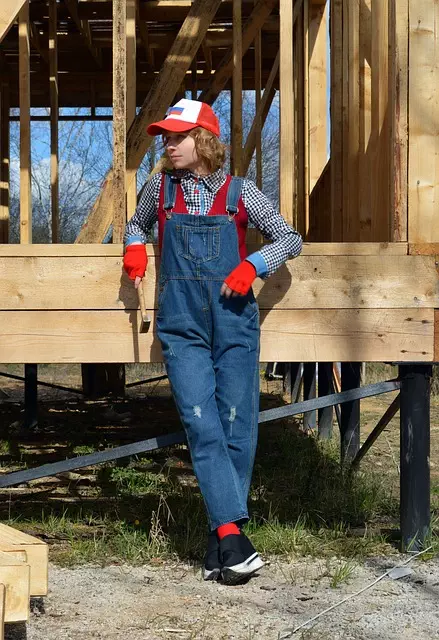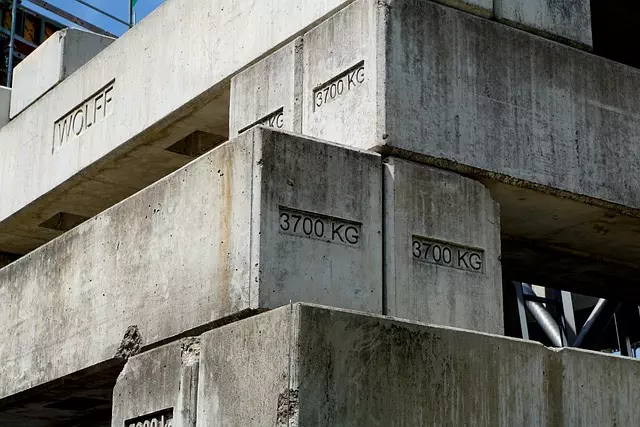Wall cracks and bows are common residential property issues caused by various factors like differential settling, expanding soils, poor soil conditions, construction activities, moisture changes, and low-quality foundation support. These defects can indicate structural damage, requiring prompt professional Residential Foundation Repair to maintain home integrity. Regular inspections in older homes help identify problems early. Underpinning, piering, wall anchors, carbon fiber wrapping, and epoxy injections are non-invasive repair solutions. Severe damage necessitates immediate action to prevent further deterioration and ensure safety. Regular maintenance, including proper drainage and humidity control, prevents structural issues associated with Residential Foundation Repair.
“Cracked or bowing walls can be more than just an aesthetic concern—they may indicate deeper structural issues, especially in older homes. This comprehensive guide delves into the intricate world of wall damage, exploring its common causes and effects. From understanding basic cracks to severe bowing, we navigate the signs and symptoms. Early intervention through residential foundation repair is key; our article offers practical advice on when to act. Learn about non-invasive solutions for minor issues and discover the expertise a professional foundation repair company brings. Lastly, explore preventative measures to safeguard your home’s wall integrity.”
Understanding Wall Cracks and Bowing: Common Causes and Effects

Cracks and bowing in walls are common issues that can have various causes, from minor settlement to more serious structural problems. Understanding these causes is essential for homeowners looking into residential foundation repair. One of the primary reasons for wall cracks is differential settling, where the soil around a building compacts at different rates, leading to uneven stress on the structure. This often occurs due to factors like poor soil conditions, nearby construction, or changes in moisture levels.
Another frequent cause is bowing walls, which can be attributed to lateral pressure from expanding soils, especially in areas with high water tables. Over time, this pressure can cause walls to bend and create noticeable bows or bulges. Additionally, improper initial construction, such as inadequate foundation support or poor-quality materials, can contribute to these issues. The effects of cracked or bowing walls extend beyond aesthetics; they may indicate underlying structural damage that requires professional attention for effective residential foundation repair solutions.
Residential Foundation Repair: Addressing Wall Issues Early

Residential foundation repair is an essential aspect of maintaining a home’s structural integrity, and addressing wall issues early can prevent significant damage down the line. Cracked or bowing walls are often signs of underlying problems with the foundation, such as settling, shifting soil, or inadequate initial construction. These issues can be exacerbated by factors like poor drainage, excessive moisture, and extreme weather conditions, ultimately leading to more severe structural complications.
Homeowners should be vigilant in monitoring any unusual wall distortions or cracks, especially in older homes. Regular inspections allow for prompt identification of potential foundation problems. Early intervention through residential foundation repair methods like underpinning, piering, or wall anchors can stabilize the walls and prevent further damage. This proactive approach ensures the long-term durability and safety of a residence.
Types of Wall Damage: From Cracks to Severe Bowing

Walls, a fundamental component of any structure, can sustain various forms of damage over time. When it comes to residential properties, understanding different types of wall damage is crucial for effective maintenance and timely repairs, often requiring professional assistance in the form of Residential Foundation Repair services.
One of the most common issues homeowners notice is cracks in the walls. These can range from minor hairline fractures to more significant structural cracks that compromise the integrity of the building. Another severe type of wall damage is bowing, where the wall starts to bend or lean inwards. Bowing can be caused by factors like poor initial construction, soil settlement around the foundation, or even improper hydration during concrete setting. Both cracks and bowing walls necessitate prompt attention to prevent further deterioration and potential safety hazards.
Inspection and Diagnosis: Identifying the Root Cause

When dealing with cracked or bowing walls, a thorough inspection and diagnosis are crucial steps in any residential foundation repair process. Homeowners should start by examining the affected areas carefully, looking for signs of structural damage, such as cracks, bulges, or uneven surfaces. Measuring the width and length of these defects can provide valuable insights into their severity and potential causes.
Identifying the root cause is key to effective wall repair. Common issues include settlement, shifting soil, poor initial construction, or water intrusion. Soil conditions play a significant role, as expansive clay soils can contract and expand with moisture content changes, leading to foundation movement. Water damage from plumbing leaks or poor drainage can also weaken structural integrity. Professional inspectors use advanced tools like moisture meters and ground-penetrating radar to pinpoint the source of problems, ensuring that any repair solutions are tailored to address the specific needs of the residential foundation.
Non-Invasive Repair Methods for Minor Cracks and Bowing

Minor cracks and bowing walls, common issues in residential structures, can be addressed through various non-invasive repair methods that are both effective and cost-efficient. One such approach is carbon fiber wrapping, where thin layers of carbon fiber fabric are applied to reinforce weak areas, acting as a sort of external armor for the wall. This technique is particularly useful for preventing further damage and promoting structural integrity without extensive excavation or disruption to the building’s interior.
Another innovative solution is the use of epoxy injections. By injecting a specially formulated epoxy into the crack or bowing area, it can fill and strengthen these weak points from within. This method provides a lasting repair, especially effective for controlling structural movement and preventing water intrusion that could exacerbate the issue. These non-invasive techniques offer homeowners an appealing alternative to more invasive and disruptive methods of residential foundation repair.
When to Consider Structural Repairs for Severely Damaged Walls

If your walls are showing significant signs of damage, such as severe cracks or bowing, it’s crucial to act promptly. While minor cracks and imperfections are common in older homes, severely damaged walls could indicate more serious structural issues that require professional attention. One of the key indicators is when these defects extend beyond cosmetic concerns and start affecting the structural integrity of your property.
In cases where walls exhibit signs of movement, like uneven surfaces or gaps forming between the wall and surrounding structures, it’s an urgent matter. Such instances often point to foundation problems that demand immediate assessment by a qualified contractor specializing in residential foundation repair. Prompt intervention can prevent further damage, costly repairs, or even safety hazards associated with structural failures.
The Role of a Professional Foundation Repair Company

When faced with cracked or bowing walls, it’s crucial to turn to a professional foundation repair company for expert assistance. These specialists are equipped with the knowledge and skills to assess the extent of the damage and implement effective solutions tailored to each unique situation. A reputable residential foundation repair service will employ advanced techniques and high-quality materials to ensure the structural integrity of your home is restored.
By engaging their expertise, homeowners can benefit from not only aesthetically pleasing repairs but also long-term stability for their properties. These professionals offer a range of services, including underpinning, wall bracing, and crack repair, addressing the root causes rather than merely masking symptoms. With their guidance, you’ll gain peace of mind knowing that your home’s foundation is in capable hands, safeguarding its value and structural soundness for years to come.
Preventative Measures: Maintaining Your Home's Wall Integrity

Regular maintenance is key to preventing walls from cracking or bowing, ensuring your home’s structural integrity and avoiding costly residential foundation repair down the line. Start by addressing any issues as soon as they arise; even minor cracks can signal deeper problems. Regular inspections are crucial, especially in regions prone to extreme weather conditions like heavy rainfall or strong winds.
Implementing proper drainage systems around your property is another preventative measure that cannot be overstated. Ensure water is directed away from your home’s foundation, preventing moisture-related damage. Additionally, maintaining proper humidity levels inside your home can mitigate issues associated with settlement and shifting soil, which often contribute to wall cracks and bowing.
